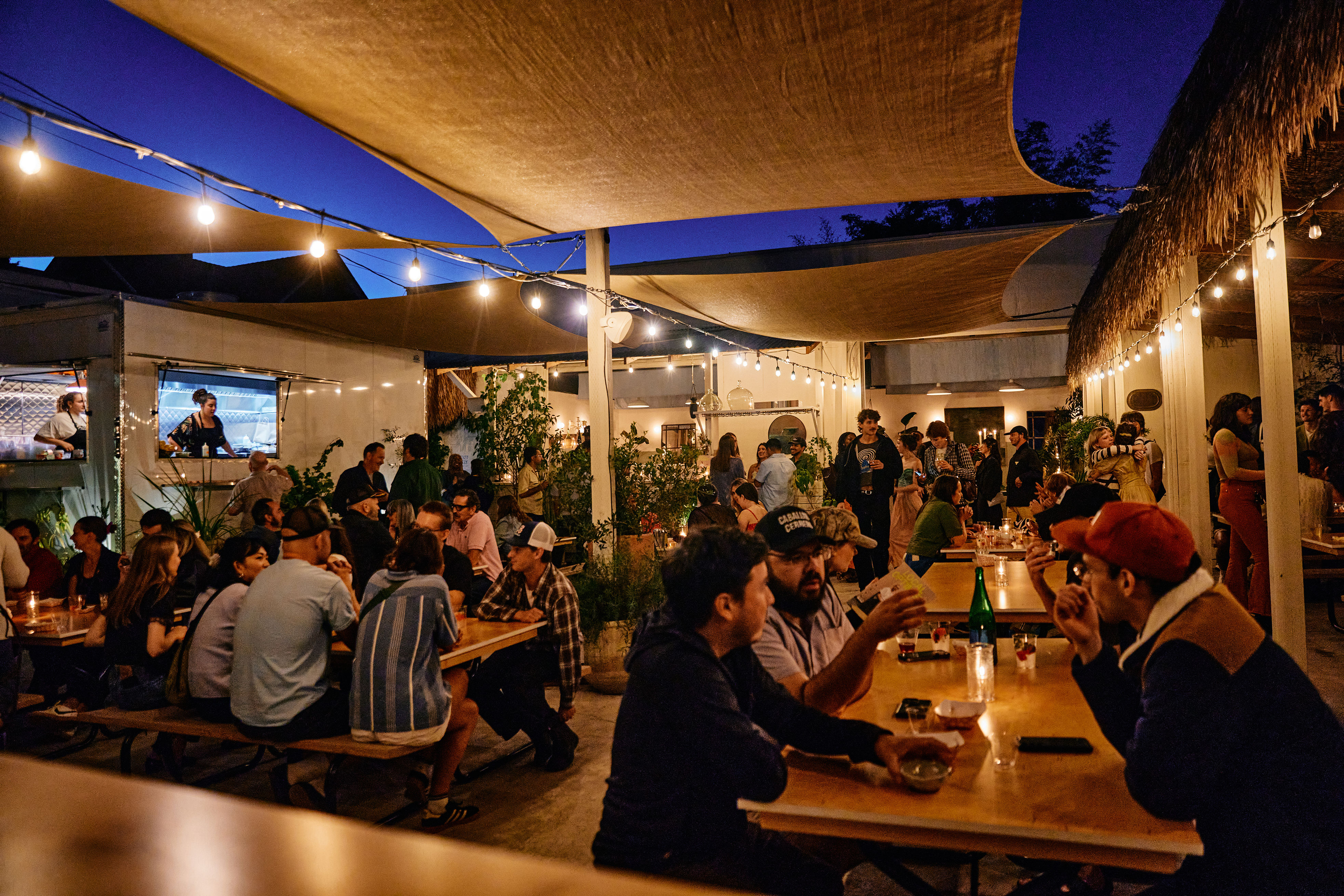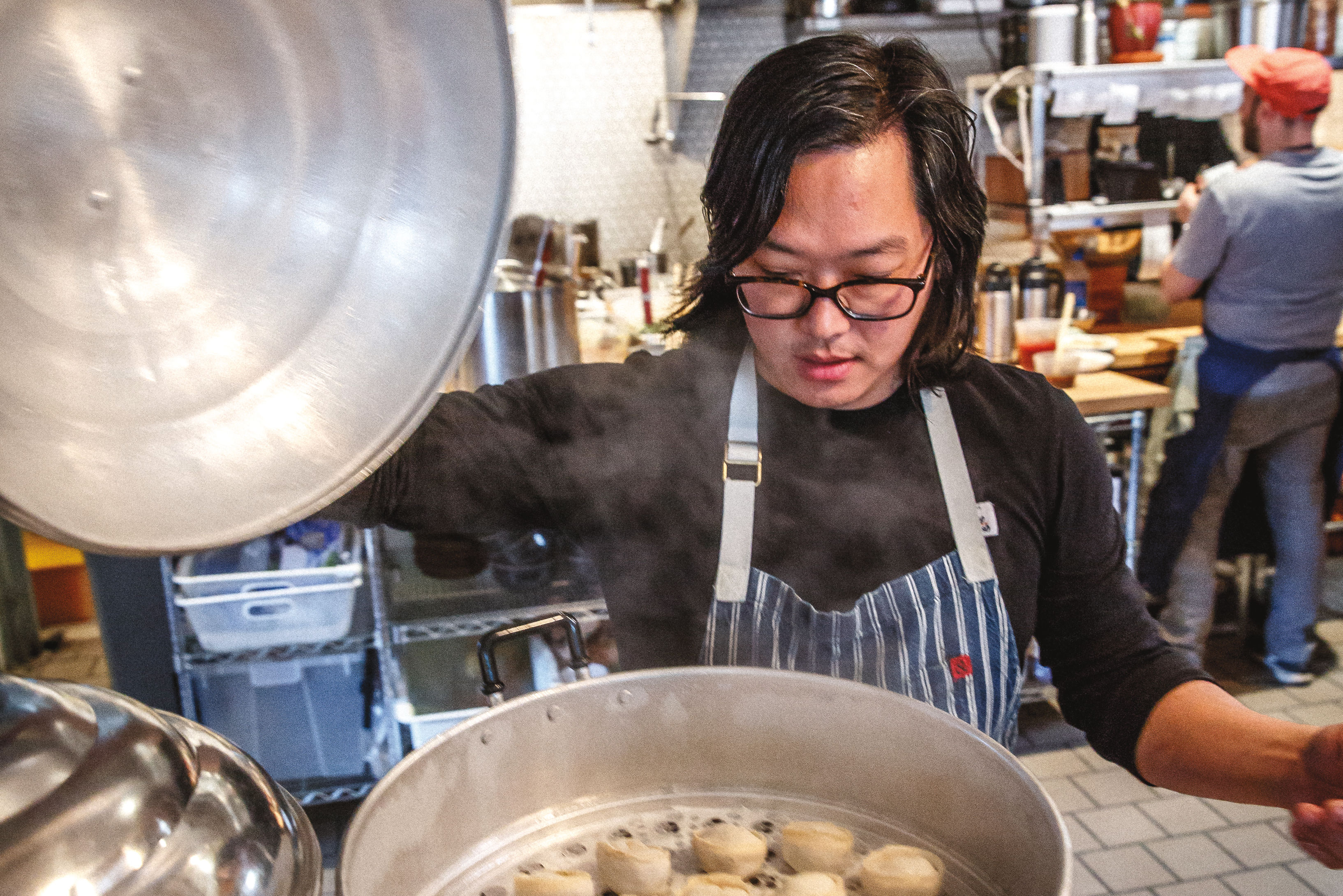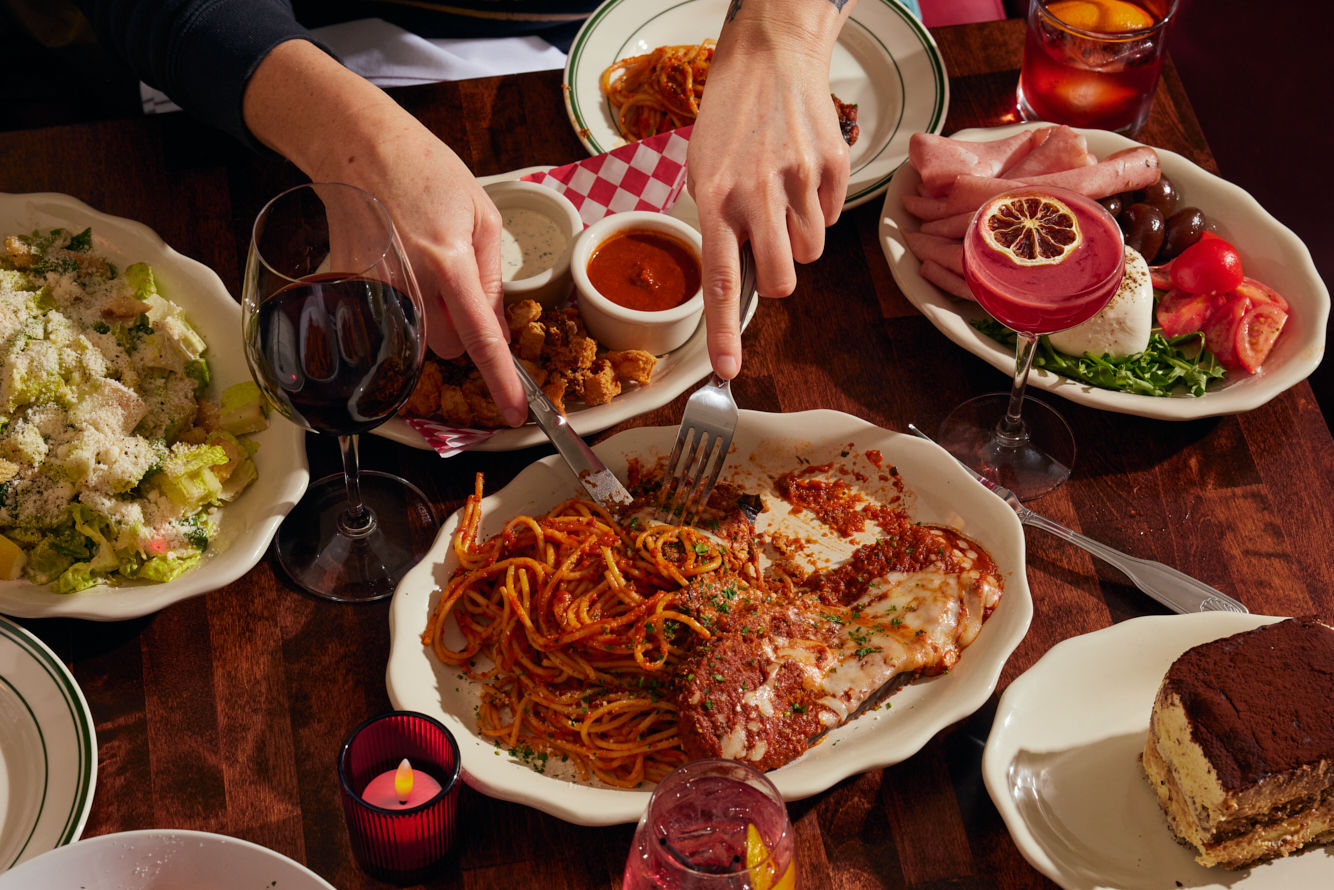Acclaimed Han Oak Reopens with Hot Pot, Caviar, and Korean Chips
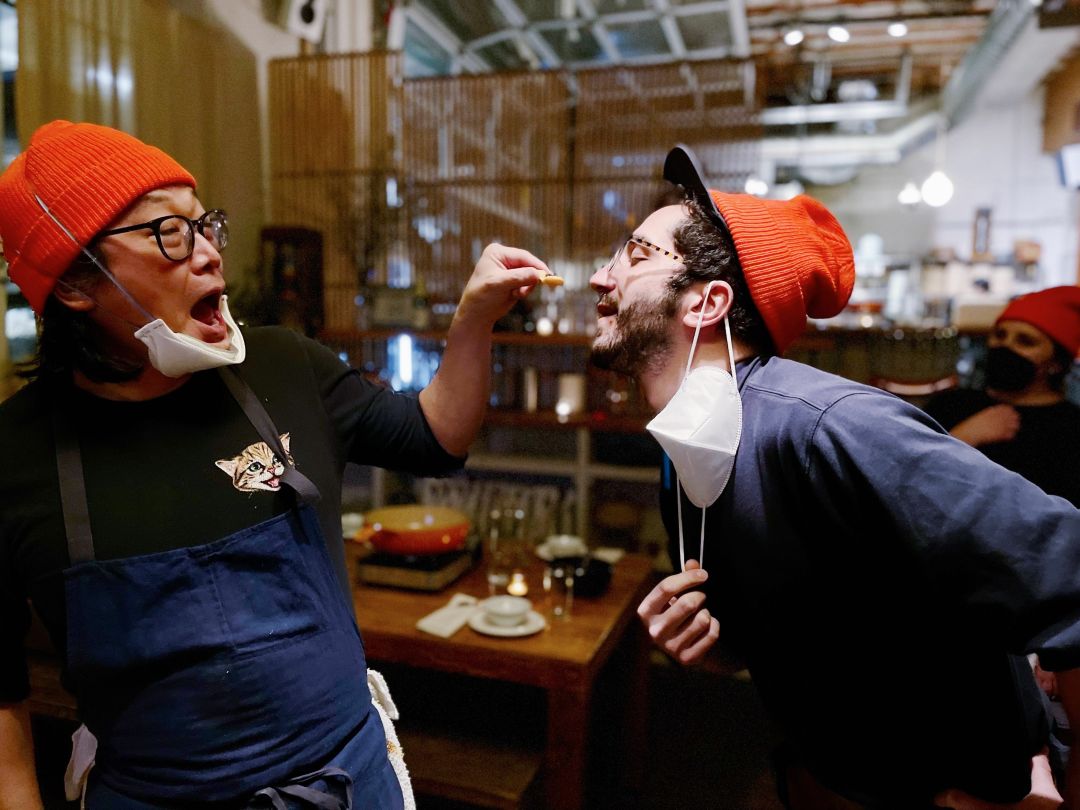
Peter Cho and Han Oak veteran server Sean "Pizza" Gugliuzza doing what Han Oak does best: having fun.
Image: Courtesy Kari Young
Drake is thumping on the sound system. Lights are party-dim. Every table sports a hot pot and blue flames, the centerpiece of a new four-course concept. At the door: Sun Young Park is making sure every customer feels welcomed at her “home,” a scene of house-party chill, Korean family vibes, and kids romping around a rambling, grassy backyard in full view of the cozy dining room and chef's counter.
Nearby, Peter Cho, the fun-loving chef at the couple's Han Oak, is bustling through the room in an orange knit cap and sneakers, clutching a giant basket of Korean potato chips. His aim: to add a personal touch to a fancy tin of Astrea caviar, glistening with big, bronze-colored pearls. A visiting chef-friend brought it to a Han Oak pop-up last fall, and Cho was hooked. Now, chips and caviar, an optional $85 add-on to the new tasting menu, exemplifies how PoMo's 2017 Restaurant of the Year blends high-brow and low, good ingredients and goofy-good taste—in the most genuine way.
According to its website, Astrea's kaluga hybrid caviar is “popular at yacht clubs and on private planes.” That doesn't stop Han Oak from adorning it the Han Oak way: “inelegantly,” as Cho puts it, with his signature head-thrown-back laugh. At the table, he chats up customers, rips open bags, shakes out an assortment of what he calls “hilarious chips” from local Asian markets -- the seafood-scented, the honey buttered, and the black truffled. When finished, he seals the bags with a plastic potato chip clamp.
Have it with a Korean beer or the lone elegant Champagne bottle in the house. The only rule here is no expectations, no judgements. Said another way: This is who we are; how we live and eat; please join us.
Which is to say, as it turns six, nearly two years after an indoor dining hiatus, the magic of Han Oak is back. The space, hidden behind a giant door at 511 NE 24th, reopened quietly in early February on Friday and Saturday nights only, for the moment.
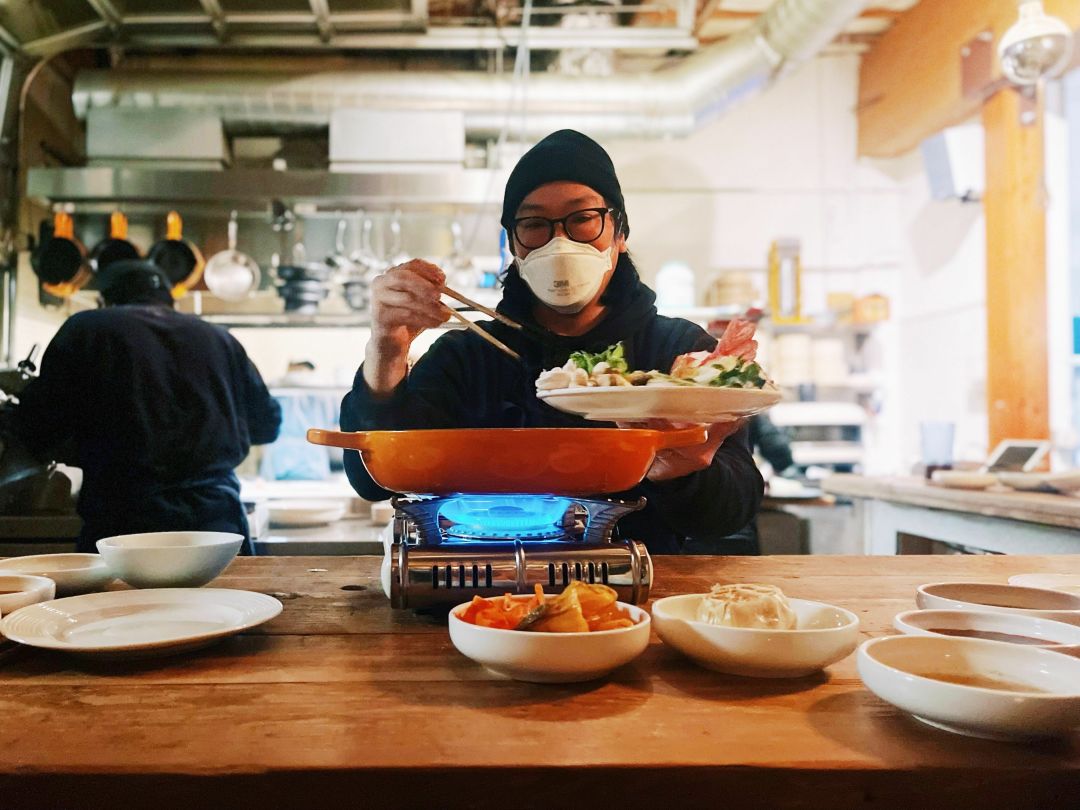
Cho fell in love with tableside cooking in Los Angeles's Koreatown.
Image: Courtesy Kari Young
Why hot pot? Cho is obsessed with tableside cooking. He and Park typically head for Korean BBQ and hot pot joints on trips to LA. Their version has been in workshop mode for several years now. I remember Cho talking about hot pot excitedly one summer during Han Oak's barbecue laboratory experience, when the backyard had pits carved into tree stumps and hanging from pots on chains—one of the restaurant's many iterations. (Read my first review here.)
So don't call it a pivot. Wandering formats and directional changes are the soul of Han Oak. Meanwhile, ICYMI: some of the pre-pandemic a la carte hits (biang biang noodles, ramen powder-dusted wings) have migrated to the couple's Toki, one of our Best New Restaurants of 2021.
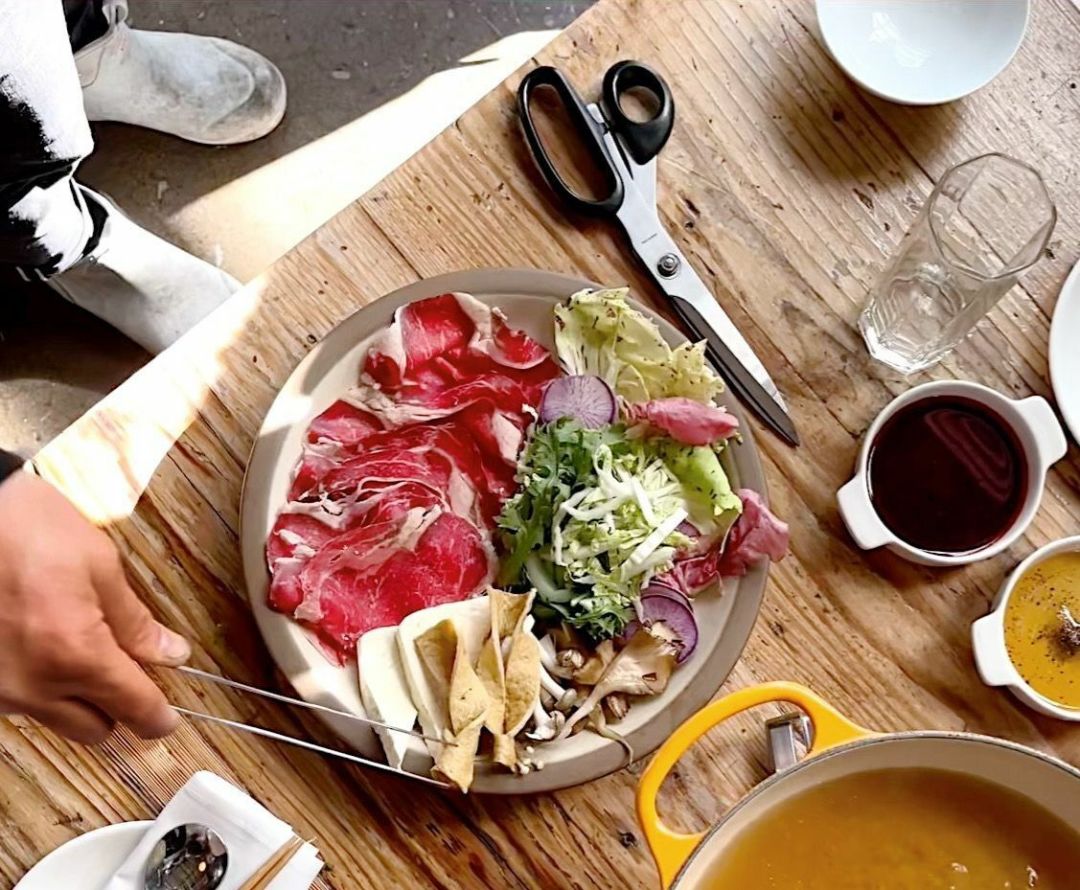
Hot pot gets the Han Oak treatment
Image: Courtesy Kari Young
The new menu draws from elements of Japanese shabu shabu (which translates to “swish swish”), Chinese hot pots, and Korean barbecue. “Draw a Venn diagram and we're at the center of that,” says Cho. Key to everything is the three sauces placed right in front of you, each with a different flavor profile (vinegar-soy-wasabi; sweet-hot-spicy gochujang; and salt and peppered sesame oil). The idea is to drag broth-cooked ingredients through the sauces, willy-nilly, sending bites in whatever direction you want.
Dinner kicks off with “mom's kimchi,” the heart of Han Oak, and terrifically creamy Japanese potato salad. Your hot pot is filled with a simmering bone broth, the connective tissue for three dishes. As it boils down, it draws complexity from the debris left behind by the previous ingredients. The fun of all this is interacting with the cooks and servers, picking up chef wisdom, and watching raw materials morph into something humble and delicious before your eyes.
First up: three cuts of gossamer-thin meats and a mountain of vegetables, mushrooms, and Ota tofu (note: a pescatarian version will drop this weekend; and a vegetarian option is in the works). Next, the broth cooks up house dumplings, chewy hand-pulled noodles, and dduk (rice cake cylinders); the latter, alas, could have used more than a quick swipe through the dipping sauce to boost their flavor. Finally, some of the remaining broth is stirred with eggs and butter into juk (rice porridge) finished with bright pops of house-cured ikura and toasted seaweed. Every bite is rich and calming, confident and proud—a highlight of the roughly two-hour, $75 meal.
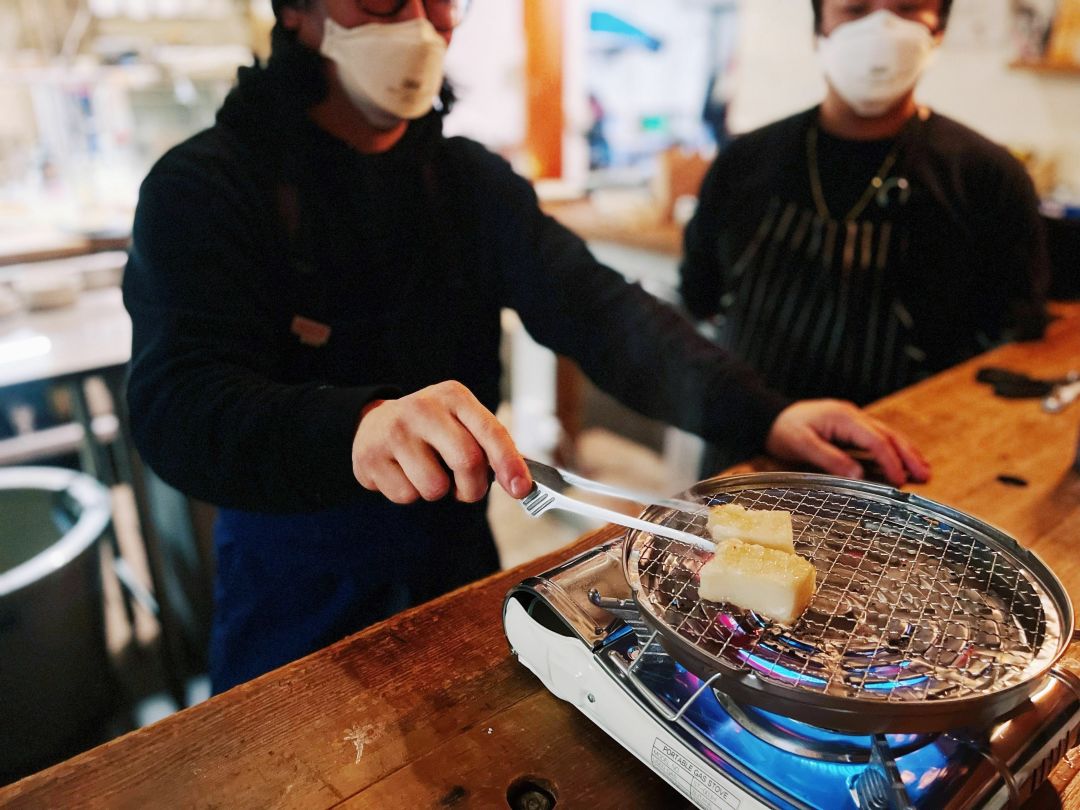
Cho makes charcoal-grilled mochi for dessert.
Image: Courtesy Kari Young
Dessert is a whimsical treat—mochi charred on a tabletop grill. My first thought: out-of-its-mind campfire marshmallow, all sweet golden crunch on the outside and sticky and stretchy in the middle. On the side comes tart lemon frozen yogurt shrouded in misugaru, a toasted grain powder.
Bottom line: Han Oak pulls off another unexpected move, understated and rocking at once. It remains one of the most singular dining experiences anywhere.
